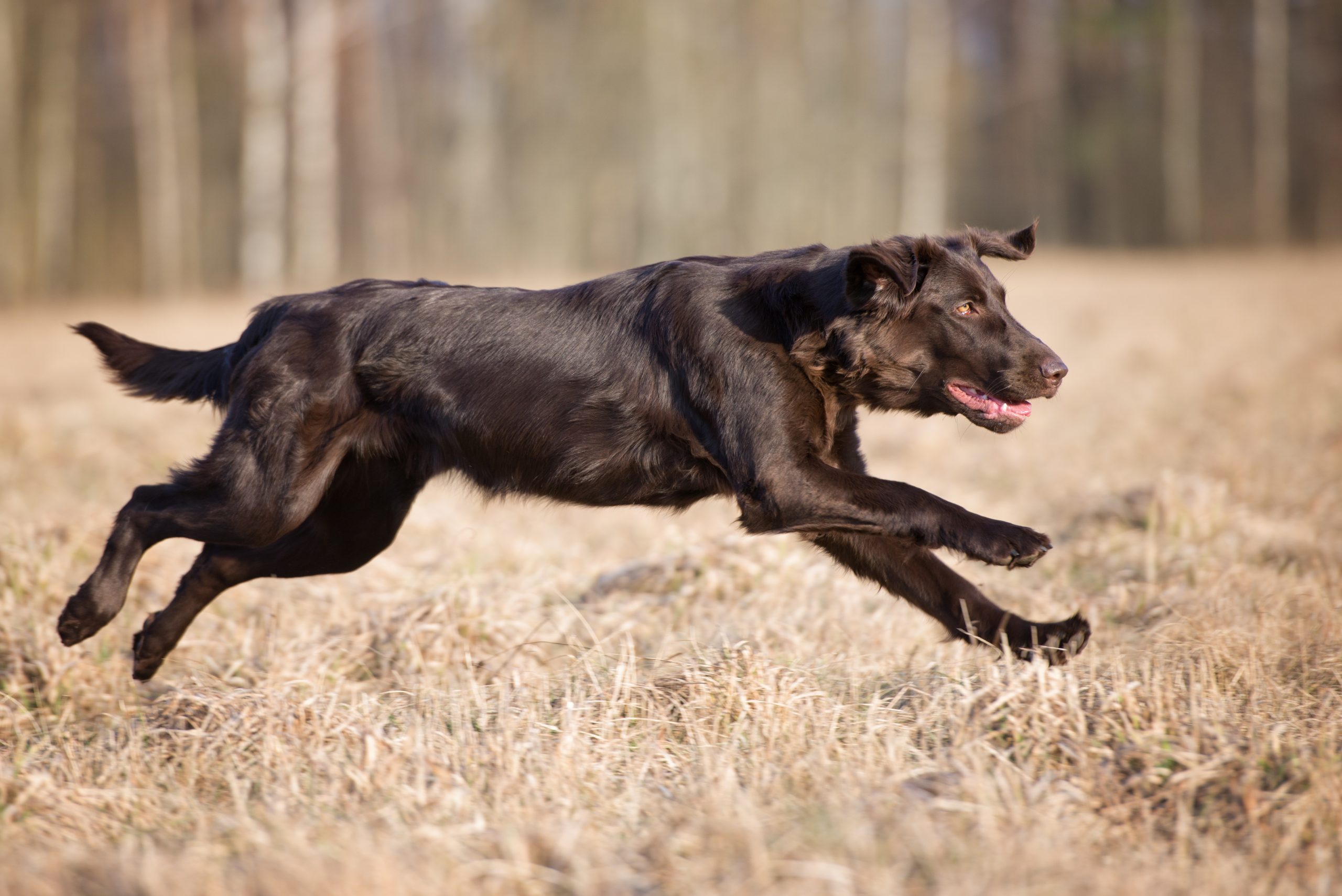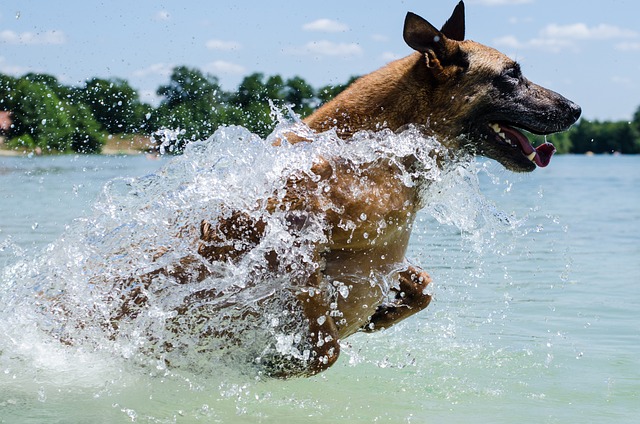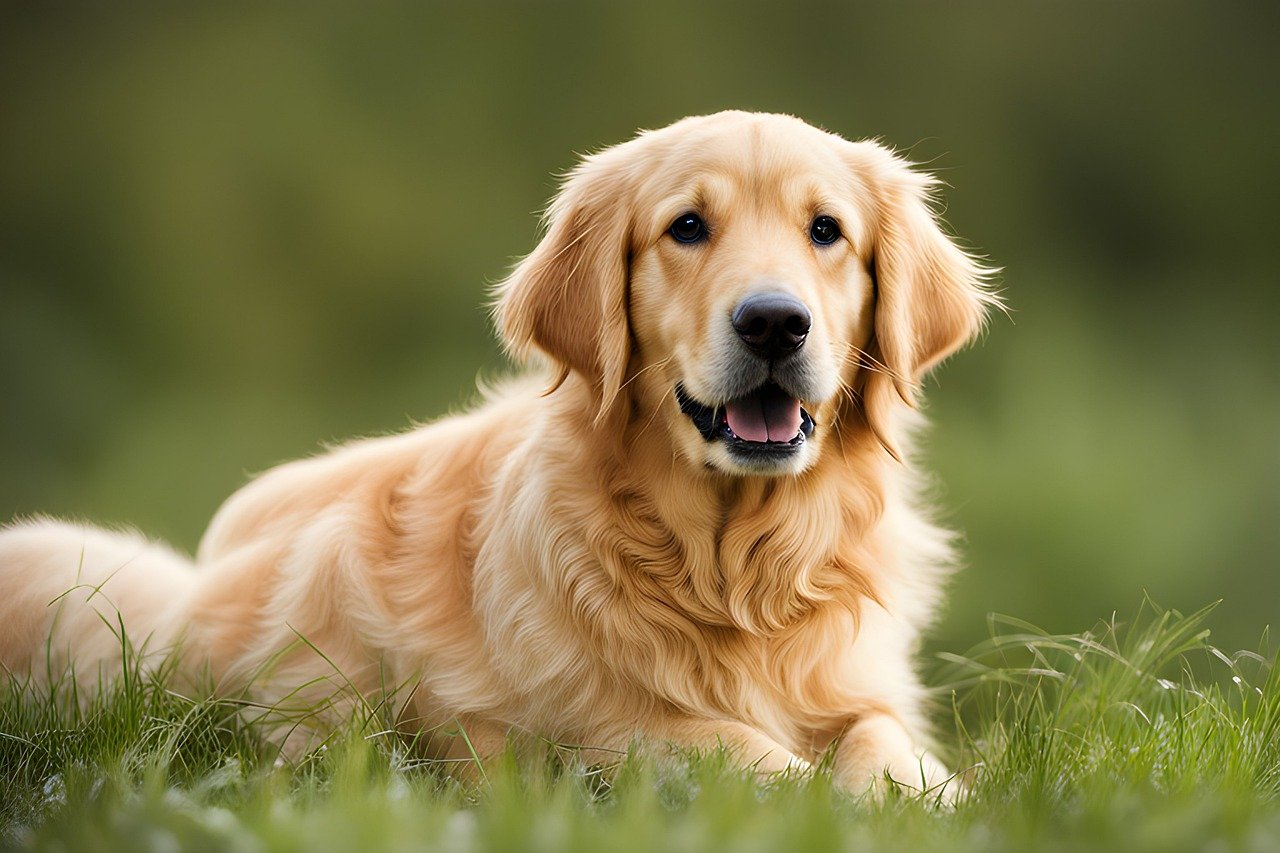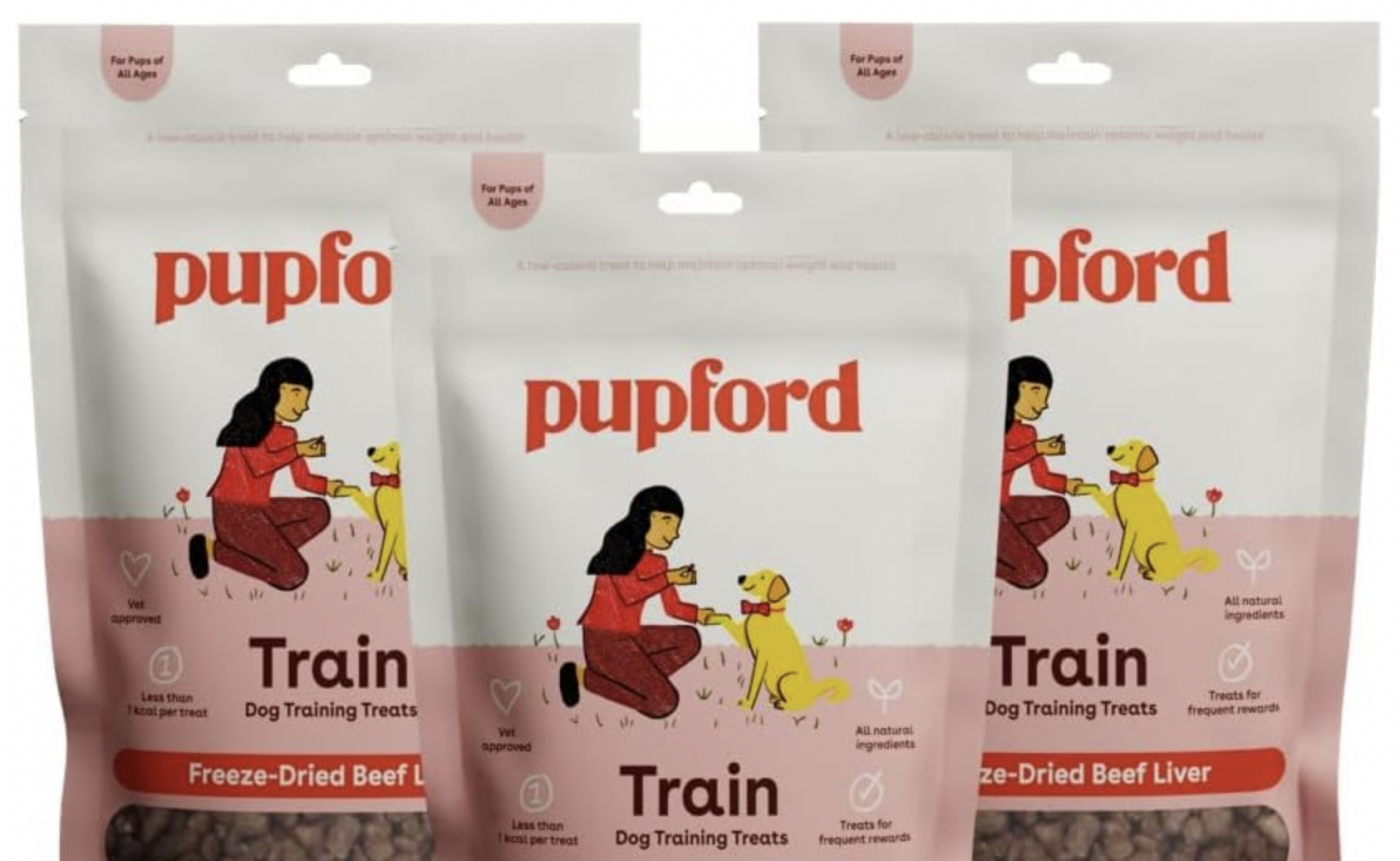The Flat-Coated Retriever, a distinctively elegant breed known for its lustrous black or liver-colored coat, typically exhibits an athletic build characterized by specific height and weight standards. Males generally stand about 23 to 24.5 inches tall at the shoulder, while females are slightly smaller, ranging from 22 to 23.5 inches. Weight-wise, males usually tip the scales between 60 to 80 pounds, and females between 55 to 70 pounds. These measurements contribute to the breed’s balanced and streamlined appearance, making them both agile and sturdy, ideal for their traditional roles in hunting and field activities.
Male Flat-Coated Retriever Weights & Heights by Age
The following chart contains the average weights and heights of male Flat-Coated Retriever from newborn to 3 years of age. Please note these are only averages. Always consult with your veterinarian if you have any concerns about your Flat-Coated Retriever’s growth.
| Age (Months/Years) | Weight (lbs) | Weight (kg) | Height (inches) | Height (cm) |
|---|---|---|---|---|
| 0-1 month | 5 – 10 | 2.3 – 4.5 | 6 – 9 | 15 – 23 |
| 2 months | 10 – 20 | 4.5 – 9.1 | 9 – 11 | 23 – 28 |
| 3 months | 20 – 30 | 9.1 – 13.6 | 11 – 14 | 28 – 36 |
| 4 months | 30 – 40 | 13.6 – 18.1 | 14 – 16 | 36 – 41 |
| 5 months | 35 – 45 | 15.9 – 20.4 | 16 – 18 | 41 – 46 |
| 6 months | 40 – 55 | 18.1 – 24.9 | 17 – 20 | 43 – 51 |
| 7 months | 45 – 60 | 20.4 – 27.2 | 18 – 21 | 46 – 53 |
| 8 months | 50 – 65 | 22.7 – 29.5 | 19 – 22 | 48 – 56 |
| 9 months | 55 – 70 | 24.9 – 31.8 | 20 – 23 | 51 – 58 |
| 10 months | 60 – 75 | 27.2 – 34.0 | 21 – 24 | 53 – 61 |
| 11 months | 65 – 80 | 29.5 – 36.3 | 22 – 24 | 56 – 61 |
| 12 months | 65 – 80 | 29.5 – 36.3 | 22 – 24 | 56 – 61 |
| 2 years | 60 – 80 | 27.2 – 36.3 | 23 – 24.5 | 58 – 62 |
| 3 years | 60 – 80 | 27.2 – 36.3 | 23 – 24.5 | 58 – 62 |
Female Flat-Coated Retriever Weights & Heights by Age
The following chart contains the average weights and heights of female Flat-Coated Retriever from newborn to 3 years of age. Please note these are only averages. Always consult with your veterinarian if you have any concerns about your Flat-Coated Retriever’s growth.
| Age (Months/Years) | Weight (lbs) | Weight (kg) | Height (inches) | Height (cm) |
|---|---|---|---|---|
| 0-1 month | 4 – 9 | 1.8 – 4.1 | 5 – 8 | 13 – 20 |
| 2 months | 8 – 18 | 3.6 – 8.2 | 8 – 10 | 20 – 25 |
| 3 months | 15 – 25 | 6.8 – 11.3 | 10 – 13 | 25 – 33 |
| 4 months | 20 – 30 | 9.1 – 13.6 | 13 – 15 | 33 – 38 |
| 5 months | 25 – 35 | 11.3 – 15.9 | 15 – 17 | 38 – 43 |
| 6 months | 30 – 45 | 13.6 – 20.4 | 16 – 19 | 41 – 48 |
| 7 months | 35 – 50 | 15.9 – 22.7 | 17 – 20 | 43 – 51 |
| 8 months | 40 – 55 | 18.1 – 24.9 | 18 – 21 | 46 – 53 |
| 9 months | 45 – 60 | 20.4 – 27.2 | 19 – 22 | 48 – 56 |
| 10 months | 50 – 65 | 22.7 – 29.5 | 20 – 23 | 51 – 58 |
| 11 months | 55 – 70 | 24.9 – 31.8 | 21 – 23 | 53 – 58 |
| 12 months | 55 – 70 | 24.9 – 31.8 | 21 – 23 | 53 – 58 |
| 2 years | 55 – 70 | 24.9 – 31.8 | 22 – 23.5 | 56 – 60 |
| 3 years | 55 – 70 | 24.9 – 31.8 | 22 – 23.5 | 56 – 60 |
These tables are based on general guidelines and can vary greatly depending on individual dogs. Always consult with a veterinarian or professional breeder for more specific information about your pet’s growth and development.
FAQs about a Flat-Coated Retriever Puppy’s Growth and Development
1. How fast do Flat-Coated Retriever puppies grow?
Flat-Coated Retriever puppies grow quite rapidly during their first six months, typically gaining weight quickly and increasing significantly in height. This growth rate can vary, but it’s common to see the most substantial changes during this early period. Owners should monitor their puppy’s growth with regular vet check-ups to ensure they are on a healthy growth trajectory.
2. What should I feed my Flat-Coated Retriever puppy to support healthy growth?
It’s important to feed your Flat-Coated Retriever puppy a high-quality, nutritionally balanced diet formulated for large-breed puppies. These foods help manage their rapid growth rate, which can help prevent joint and bone problems later in life. Always ensure fresh water is available and consider consulting your veterinarian for specific dietary recommendations.
3. How much exercise does a Flat-Coated Retriever puppy need?
While they are energetic and playful, Flat-Coated Retriever puppies should not be over-exercised as their bones and joints are still developing. Short, frequent walks and play sessions in a safely enclosed area are ideal. As they grow older and stronger, the amount and intensity of exercise can gradually increase.
4. When do Flat-Coated Retriever puppies reach their full height?
Most Flat-Coated Retrievers will reach their full height by about 12 to 18 months of age. However, they will continue to fill out and gain muscle until they are about two or three years old. Regular measurements and monitoring can help you track your puppy’s growth.
5. Is it normal for my Flat-Coated Retriever puppy to have growth spurts?
Yes, it’s quite normal for puppies, including Flat-Coated Retrievers, to experience growth spurts. During these periods, they may seem hungrier than usual and grow noticeably in a short time. These spurts can be sporadic and differ from one puppy to another.
6. How can I tell if my Flat-Coated Retriever puppy is overweight?
An overweight puppy might have excess body fat covering his ribs, and his waist may be indistinct when viewed from above. You should be able to feel your puppy’s ribs without a thick layer of fat over them. Regular check-ups with your vet can also help in maintaining an ideal weight.
7. What are the signs of underfeeding my Flat-Coated Retriever puppy?
Signs of underfeeding include visible ribs, hip bones, and spine. The puppy might also show less energy and a dull coat. If you suspect your puppy is underfed, consult your vet for a diet assessment and recommendations.
8. How often should I measure the height and weight of my Flat-Coated Retriever puppy?
Measuring the height and weight monthly is a good practice during the first year. This helps to ensure they are growing as expected and allows you to adjust their diet and exercise if needed. Keeping a growth chart can also provide useful information for your veterinarian.
9. What health problems can arise from improper growth in Flat-Coated Retrievers?
Improper growth can lead to skeletal disorders such as hip dysplasia, especially in large breeds like Flat-Coated Retrievers. Overfeeding and excessive exercise can exacerbate these issues, highlighting the importance of a balanced diet and appropriate physical activity during their formative months.
10. Can growth variations affect the temperament of Flat-Coated Retriever puppies?
While growth variations typically don’t directly affect a puppy’s temperament, discomfort from rapid growth or joint issues can make a puppy irritable or less active. Ensuring a healthy growth rate can help maintain a stable and happy temperament.
11. What role do genetics play in the growth of my Flat-Coated Retriever?
Genetics play a significant role in determining the size a Flat-Coated Retriever will ultimately reach. Inherited traits from the puppy’s parents can influence everything from ultimate size to potential health issues related to growth, which is why knowing the puppy’s lineage can be important.
12. How does neutering or spaying affect the growth of a Flat-Coated Retriever puppy?
Neutering or spaying can affect the growth of Flat-Coated Retrievers, potentially leading to a slightly taller stature due to the delay in the closure of the growth plates. It’s essential to discuss the best timing for these procedures with your vet to optimize health and growth.
13. Why is my Flat-Coated Retriever puppy growing unevenly?
Uneven growth, such as one limb appearing longer than the other, can occasionally occur but usually evens out over time. If the uneven growth is pronounced or accompanied by limping or discomfort, it’s important to consult your veterinarian.
14. What are the best supplements for supporting growth in Flat-Coated Retrievers?
In most cases, a balanced puppy-specific diet should provide all the necessary nutrients for growth. However, in some cases, supplements like glucosamine might be recommended by your vet, particularly if there’s a risk or presence of joint problems.
15. How do seasonal changes affect the growth and development of Flat-Coated Retriever puppies?
Seasonal changes can affect your puppy’s growth indirectly by influencing their activity level and appetite. For example, puppies might be less active during hot summer months, which can affect their physical development. Adjusting their exercise and diet according to the season can help manage these effects.
16. What is the average paw size of a fully grown Flat-Coated Retriever?
The paw size of a fully grown Flat-Coated Retriever can vary but generally reflects their body size. Larger paws are typical of the breed, providing good support for their size and active nature. You can expect their paws to be proportionate to their body size, ensuring stability and efficient movement.
17. How does early socialization impact the growth of Flat-Coated Retriever puppies?
Early socialization doesn’t directly affect physical growth but is crucial for healthy psychological development. Socializing your puppy helps them become well-adjusted adults, capable of handling stress better, which indirectly supports healthy development and growth.
18. Can a Flat-Coated Retriever puppy grow too quickly? What are the risks?
Rapid growth in puppies, especially in large breeds like the Flat-Coated Retriever, can strain the developing bones and joints, leading to structural and health issues such as hip dysplasia. It’s important to manage their diet and exercise to moderate their growth rate.
19. What is the best type of bedding for a growing Flat-Coated Retriever puppy?
The best bedding for a growing puppy is one that supports their joints and bones. Orthopedic beds are a great choice as they provide firm support and help distribute the puppy’s weight evenly, which is especially important during their rapid growth phases.
20. When should I switch my Flat-Coated Retriever puppy to adult dog food?
Typically, you should start transitioning your Flat-Coated Retriever from puppy food to adult dog food when they reach about 80% of their expected adult size, which usually happens around 12 months of age. However, consult with your vet for the best timing based on their specific growth and health needs.




